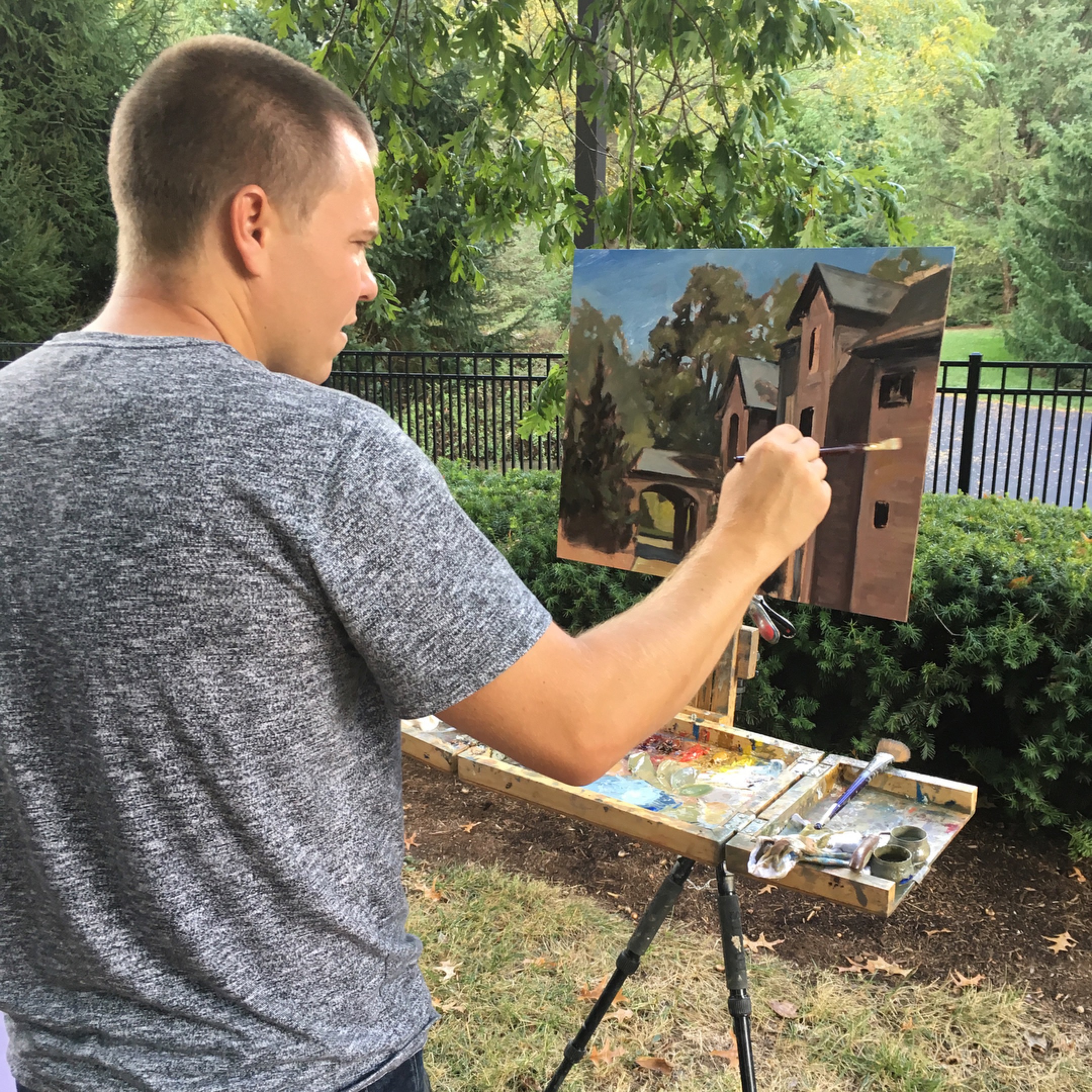Getting Started with Plein Air
Artist Justin Vining walks you through the basics of getting started with Plein Air painting
Justin Vining is an Indianapolis-based artist, specializing and landscapes and cityscapes. Justin studied Art Education at Purdue University and taught elementary art for three years. Following his tenure as a teacher, Justin attended Valparaiso Law school, where he rekindled his love for creating between classes and clerking. Shortly after graduating and passing the bar in 2010, Justin decided to pursue art full time and hasn’t looked back since. See his work here.
Supplies
Less is More – Design a simple/lean setup. This will enable you to go to farther, cooler places and make it easier to just get out and go on a whim!
Start out with a Limited/Split Primary Palette – A warm & cool red, yellow, blue, titanium white, and perhaps a burnt umber or burnt sienna. You don’t need to carry a black- true black is rarely found in nature.
Brushes – I prefer hog bristle long filberts & long flats. Start out your painting with a big brush and save your small brushes for the very end.
Painting Surface – I like using panels outside as they are more compact, and durable with no risk of puncture. Carrying a canvas through tricky outdoor terrain can become risky.
Painting Process
Start Thin (Grisaille Layer) – Your first layer is almost like not painting at all- scrub in a “dirty” dry value that begins to describe the composition and form.
Think in the Most Basic Shapes – Squint really hard at almost any scene and you can quickly break it down into 2 or 3 big shapes of value. Use these shapes to start your painting.
Mixing Colors – I will generally premix 3-5 of my major colors and then start mixing the variations off those main ones. Put some color on the end of your palette knife and hold it up to what you are trying to match it to. Squint real hard to check value and color accuracy.
General Preparedness
Water/small snack
Headlamp (hiking out in dark)
Summer – bug spray, suntan lotion
Spring/Fall – waterproof boots/poncho
Nocturne – 2 piano lights in case natural street lamp light is not an option
Winter – ultra warm gloves & boots are the key here, its easy to keep the core warm, its a lot harder to keep your feet and hands dry and warm
Justin’s Plein Air Rembrandt Oils Palette
411 Burnt Sienna
409 Burnt Umber
406 Ultramarine Deep
534 Cerulean
342 Brown Madder Deep
377 Perm Red Medium
227 Yellow Ochre
208 Cad Yellow Light
118 Titanium White




